When it comes to city passes and travel cards, it’s usually fairly easy to figure out whether they would be worth it for you or not. For things like the Paris Pass or London Pass, they have a list of the most popular attractions and how much they cost, right there for you to see. The Swiss Travel Pass, however, is shrouded in mystery, or at least it was until I spent several days tracking down all of the prices and benefits.
A great many of the visitors and commenters on my popular page about where to go in Switzerland on a short visit are wondering whether the Swiss Travel Pass is a good deal. Embarrassingly, I’ve always had to answer that I found the pass too confusing to confidently advise people on. Now that has all changed, after literally days of research.
Note: This article was last updated in February, 2024.
Disclosure: This is a reader-supported website and some of the links are affiliate links where a small commission is paid to help keep this site going, but the cost to visitors is the same. The Swiss Travel Pass seems quite expensive at first, so it felt like it might be hard to get your money’s worth out of it. As it turns out, it’s pretty easy to get good value, and it’ll be a good deal for many visitors.
New in 2024
Prices increased an average of 5.9% from 2023 on the Swiss Travel Passes, but the Half Fare Card remains at CHF120, which is where it’s been for many years. Train fares in the country increased by similar percentages so the value is basically unchanged. There were no other notable changes to service or the included attractions and train routes.
>>>Buy the Swiss Travel Pass online
Where to stay in Interlaken and the Lauterbrunnen Valley
Since most people reading this will be visiting the Interlaken area and I get so many questions about it, I decided to write a detailed guide on which area to stay in while visiting this area.
>>>Where to stay in Interlaken or the Lauterbrunnen Valley in Switzerland
I included many huge photos in that post so readers will be able to get a better idea of what each place looks like and they are worth a look by itself.
>>>Lucerne or Interlaken: Which to visit and how long to stay?
The article just above will help you decide on how long to spend in each of Switzerland’s two best tourist areas.
Are you 100% sure where you want to go in Switzerland? This should help
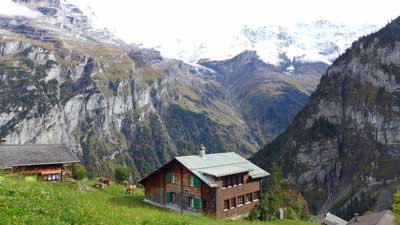
Zurich and Geneva are pleasant but dull. The good news is that Switzerland is packed with amazing sights and none of them are the big cities. If you aren’t 100% locked in yet, please read the article below and I think you’ll enjoy it.
Is the Swiss Travel Pass a good deal? Here's the short version

The bottom line is that the scenery, train journeys, and cable car rides in Switzerland are stunning and not found anywhere else in the world. They are also quite expensive if you pay for them one at a time. So no matter how you visit Switzerland, you are going to be paying quite a bit, or skipping the absolute best things that you’ve come there to see.
With good planning it’s quite easy to get great value out of a Swiss Travel Pass, but it might be a poor choice for those who don’t like to plan ahead. You can easily do a scenic train ride and a cable car in the same day, and still have time to do a scenic hike in the process.
First class or second class? Good news for most people
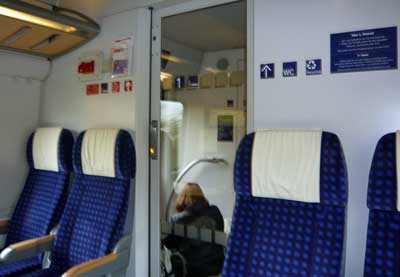
That said, Swiss Trains are literally the nicest in Europe and even the Second Class seats and carriages are nicer and roomier than trains in neighboring countries. The First Class seats are larger and nicer with only 3 across the cabin instead of 4, but honestly Second Class is perfectly comfortable for almost everyone.
Again, First Class on European trains like this is generally popular with business travelers where the company is paying and they need to get work done during the ride, and also senior citizens who don’t want to worry about a carriage full of backpackers. For most of the rest of us, Second Class is more than comfortable enough and the seat width and legroom compare to business-class airline seats. I’m a big and tall guy and I almost always travel in Second because it’s plenty comfortable enough and all the seats arrive at the same time anyway.
The longer you'll be in Switzerland, the better deal a Swiss Travel Pass will be
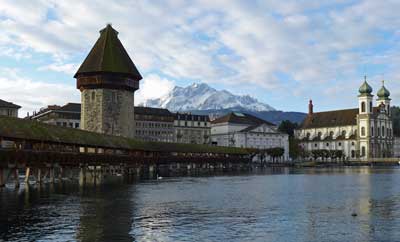
In other words, if you are staying 5 days or fewer, you have to do the math to determine your best option. But if you are spending even 6 or 7 days in Switzerland then the 6-day or 8-day Pass is almost guaranteed to be a great deal and your best choice. Once you have a Swiss Travel Pass you’ll absolutely love the ability to just hop on any train (excellent trains, always on time) and most boats and cable cars without having to worry about the cost. The per-day cost of an 8-day Pass even if you only use 6 of those days is about CHF65, and Switzerland is filled with amazing train rides and boats and cable cars that can get you that much value before noon each day.
Schilthorn (50% discount) and Jungfraujoch (25% discount) are cheaper with a Swiss Travel Pass
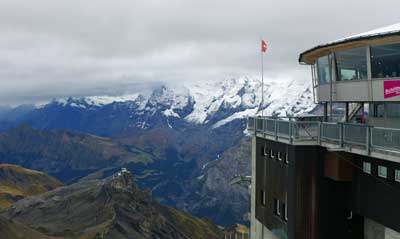
Both of those peak experiences are extraordinary and different from each other. Even so, compared to Jungfraujoch, Schilthorn is also faster and more comfortable on the way up and down. You can enjoy an excellent visit to Schilthorn in 4 hours or so (or a bit longer if you eat at the spinning Piz Gloria restaurant at the top), while a visit to Jungfraujoch requires closer to 6 hours.
NOTE: Schilthorn closes for maintenance for a week or two in late November most years.
Consider the Swiss Half-Fare Card instead
If you AREN’T going to be doing two or more of the long (and expensive) scenic train trips, you will get much better value out of the Swiss Half-Fare Card, which is explained a bit below.
Mt Rigi, near Lucerne, is 100% covered by the Swiss Travel Pass
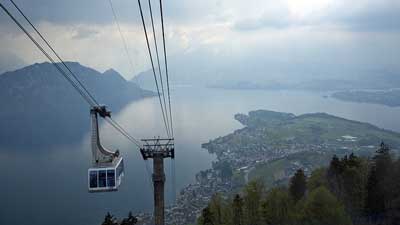
Is a Swiss Travel Pass right for you?
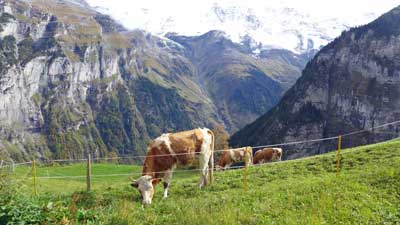
Most people only visit Switzerland for 5 or 6 days at most, so the 3-day and 4-day passes are the ones to focus on. But if you are staying for 8 days or more, those longer passes are almost certainly a great deal for you.
Long story short, if you plan on doing 2 of the more expensive scenic trains and the Jungfraujoch railway or the Schilthorn cable car, then the pass will save you money. Switzerland is expensive, but it’s worth it, and the travel pass can help make it a bit more affordable.
What the Swiss Travel Pass includes
- Free rail travel on normal trains and most scenic trains
- Discounted travel (about 50%) on popular tourist mountain trains
- Discounted travel (about 50%) on popular tourist cable cars
- Free travel on public transport in 75 towns and cities
- Free entry to around 500 museums in Switzerland
The Swiss Travel Pass covers the fare on the most popular scenic and panoramic trains. You can choose a normal seat in a regular carriage for no additional cost, but there is a supplement of CHF8 to CHF49 for a reserved seat in one of the special panorama carriages on these routes.
Prices of the 2024 Swiss Travel Pass
1st Class
- Adult 3-day Pass: CHF389
- Youth (4 to 25) 3-day Pass: 274
- Adult 4-day Pass: 469
- Youth (4 to 25) 4-day Pass: 330
- Adult 6-day Pass: 602
- Youth (4 to 25) 6-day Pass: 424
- Adult 8-day Pass: 655
- Youth (4 to 25) 8-day Pass: 469
- Adult 15-day Pass: 723
- Youth (4 to 25) 15-day Pass: 512
2nd Class
- Adult 3-day Pass: CHF244
- Youth (4 to 25) 3-day Pass: 172
- Adult 4-day Pass: 295
- Youth (16 to 25) 4-day Pass: 209
- Adult 6-day Pass: 379
- Youth (16 to 25) 6-day Pass: 268
- Adult 8-day Pass: 419
- Youth (16 to 25) 8-day Pass: 297
- Adult 15-day Pass: 459
- Youth (16 to 25) 15-day Pass: 328
Swiss Travel Pass Flex
This version costs a bit more, but you don’t have to use the travel days consecutively. It’s a great option for anyone who won’t be taking longer train rides each day.
- Adult 3 Flex days in 1 month (1st Class): CHF445
- Adult 3 Flex days in 1 month (2nd Class): 279
- Adult 4 Flex days in 1 month (1st Class): 539
- Adult 4 Flex days in 1 month (2nd Class): 339
- Adult 6 Flex days in 1 month (1st Class): 644
- Adult 6 Flex days in 1 month (2nd Class): 405
- Adult 8 Flex days in 1 month (1st Class): 697
- Adult 8 Flex days in 1 month (2nd Class): 439
- Adult 15 Flex days in 1 month (1st Class): 755
- Adult 15 Flex days in 1 month (2nd Class): 472
Where to buy the Swiss Travel Pass
The Swiss Half-Fare Card – A better option for many visitors
Far less confusing than the Swiss Travel Pass, you can instead get a Swiss Half-Fare Card, and it will be a better deal for many travelers. The price is lower and it’s much easier to do the math, and the discounts are greater on some things as well.
- Swiss Half-Fare Card for 30 days: Adults – CHF120 or US$129
What you get:
Those who buy the Swiss Half-Fare Card will get 50% discount on all trains, buses, and boats in Switzerland for up to 30 days, as well as 50% off all public transportation in 75 cities and towns.
>>>Buy the Swiss Half-Fare Card
Why the Half-Fare Card is a better deal for many
While the Swiss Travel Pass is a great deal for those doing many of the expensive scenic journeys and mountain sights within a few days, it’s not good value for those who are doing fewer of the expensive trips and/or those who are staying longer. Also, the Swiss Travel Pass only provides a 25% discount on the amazing Jungfraujoch Railway, which costs between CHF120 and CHF224 return depending on your starting point, while the Half-Fare Card provides a 50% discount.
The math is simple as well. You can just add up the cost of the trains, boats, and buses you’ll be taking while in Switzerland, and if the total is more than CHF240 or so, the Half-Fare Card will save you money.
Example itinerary:
- Zurich to Interlaken train (2nd Class): CHF50
- Schilthorn Cable Car: CHF112
- Jungfraujoch railway from Interlaken: CHF205
- Interlaken to Lucerne train (2nd Class): CHF33
- Mt Rigi roundtrip from Lucerne: CHF84
- Engelberg (near Lucerne) to Mt. Titlis Cable Car: CHF92
- Lucerne to Zurich train (2nd Class): CHF25
Total per person: CHF601
Total with Half-Fare Card (including price of card): CHF420.50
It would be tough to do all of those things in 4 days, although it is possible. If you bought a 4-day Swiss Travel Pass here is how it adds up:
4-Day Swiss Travel Pass: CHF259
Supplements for Schilthorn, Jungfraujoch, and Mt. Titlis: CHF203.25
Total cost: CHF462.25
Bottom line on the Swiss Half-Fare Card
Since the Half-Fare Card lasts 30 days and provides a larger discount on Jungfraujoch, it is better value for visitors who want to include that scenic top-of-Europe rail journey on their trip. The discounts also add up more quickly on Schilthorn and Mt. Titlis trips, just to name two examples, and you don’t have to take many longer rail journeys to get value out of the Half-Fare Card.
Swiss Saver Day Pass (A one-day unlimited travel pass)
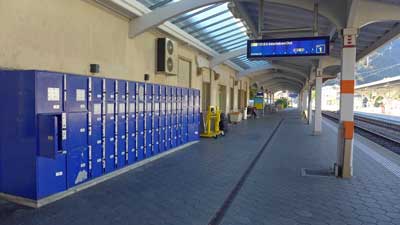
If you buy the Saver Day Pass at least 21 days in advance (and up to 60 days in advance) the 2023 cost is:
- 2nd Class (with Half Fare Card): CHF29
- 1st Class (with Half Fare Card): CHF82
- 2nd Class (with no Half Fare Card): CHF52
- 1st Class (with no Half Fare Card): CHF97
Once you research the normal cost of Swiss train fares you’ll see that the above prices are a very good deal for anyone riding more than 150 kilometers or so in a day. If you are just going, for example, from Zurich to Lucerne or Interlaken on a day, it’ll be cheaper to just buy that ticket individually. But if you are going from Geneva or Montreux to Interlaken or Lucerne then the Saver Day Pass will be much cheaper. Better still, you can use a Saver Day Pass to go from Interlaken to Geneva and back on the same day on the Goldenpass line and returning on the faster train through Bern, and it will still all be included for free.
If you don’t buy a Saver Day Pass at least 14 days in advance it’s more expensive, and if you only buy 1 to 3 days in advance it’s VERY expensive, so the key is to buy early. This is all confusing, but the Saver Day Pass should be a great option for many people only in Switzerland for one to three days.
Popular Swiss panorama scenic trains
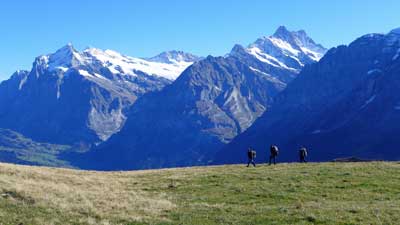
- Glacier Express
- Route: Zermatt to St. Moritz
- Train type: Panorama
- Journey time: 8 hours 3 minutes
- Distance: 291km
- 1st Class fare: CHF272
- 2nd Class fare: CHF159
- Compulsory seat reservation fee: CHF44 or 49
- Supplement for Swiss Pass holders: 13 to 33 for panorama carriage
- Bernina Express
- Route: Chur to Tirano and Lugano
- Train type: Panorama and bus
- Journey time: 4 hours 13 minutes and 3 hours 10 minutes
- Distance: 148km and 90km
- 1st Class fare: CHF113
- 2nd Class fare: CHF66
- Compulsory seat reservation fee: CHF32
- Supplement for Swiss Pass holders: 10 to 14 for panorama carriage
- GoldenPass Line
- Route: Lucerne to Montreaux
- Train type: Panorama
- Journey time: 5 hours 8 minutes
- Distance: 191 km
- Prestige Class fare: CHF131
- 1st Class fare: CHF96
- 2nd Class fare: CHF56
- Supplement for Swiss Pass holders: 8 to 15 for panorama carriage
- Gotthard Panorama Express (formerly Wilhelm Tell Express)
- Route: Lugano or Locarno to Lucerne
- Train type: Panorama and boat
- Journey time: 5 hours 21 minutes
- Distance: 182 km
- 1st Class fare: CHF164
- 2nd Class fare: CHF135
- Supplement for Swiss Pass holders: 39 to 49 for panorama carriage
- Swiss Chocolate Train
- Route: Montreux to Broc round trip
- Train type: Panorama or First Class
- Journey time: X hours X minutes
- Distance: 82 km
- 1st Class fare: CHF99
- 2nd Class fare: 89
- Supplement for Swiss Pass holders: 39
Popular Swiss scenic and theme trains
The scenic trains below are also extremely popular as sightseeing journeys rather than just as transportation, but can be used as both.
- Jungfraujoch round trip
- Route: Interlaken to Jungfraujoch
- Train type: special mountain train
- Journey time: 4 hours 41 minutes, round trip, plus time on top
- Distance: 73 km
- 1st Class fare: N/A
- 2nd Class fare: CHF224
- Supplement for Swiss Pass holders: 147 (so, a saving of CHF77)
- Gornergrat Railway
- Route: Gornergrat Railway
- Train type: Cog railway
- Journey time: 44 minutes return
- Distance: 10 km
- 1st Class fare: N/A
- 2nd Class fare: CHF90
- Supplement for Swiss Pass holders: 45
- Rigi round trip
- Route: Lucerne to Rigi
- Train type: Cog railway
- Journey time: 3 hours 25 minutes, plus time at the top
- Distance: 58 km
- 2nd Class fare: CHF78
- Supplement for Swiss Pass holders: None (this one is free with the pass)
- Mt Rigi Excursion (one-way and walk down)
- Route: Lucerne to Mt Rigi
- Train type: cogwheel train and/or cable car
- Journey time: 45 minutes up
- 1st Class fare: N/A
- 2nd Class fare: 49
- Supplement for Swiss Pass holders: 0
- Lotschberg Mountain Route and Centrovalli
- Route: Bern to Locarno
- Train type: Narrow gauge
- Journey time: 4 hours 40 minutes
- Distance: 212 km
- 1st Class fare: CHF158
- 2nd Class fare: CHF90
- Supplement for Swiss Pass holders: 5
- Jura round trip (Watchmaking Tour)
- Route: Neuchatel through Jura
- Train type: Regular
- Journey time: 3 hours 0 minutes
- Distance: 143 km
- 1st Class fare: CHF168
- 2nd Class fare: CHF108
- Supplement for Swiss Pass holders: 0
- Pre-Alpine Express
- Route: St. Gallen to Lucerne
- Train type: Regular
- Journey time: 2 hours 15 minutes
- Distance: 146 km
- 1st Class fare: CHF83
- 2nd Class fare: CHF47
- Supplement for Swiss Pass holders: 0
- Jura Foot Line
- Route: Basel to Geneva
- Train type: Regular
- Journey time: 2 hours 40 minutes
- Distance: 248 km
- 1st Class fare: CHF132
- 2nd Class fare: CHF75
- Supplement for Swiss Pass holders: 0
Popular Switzerland cable car rides
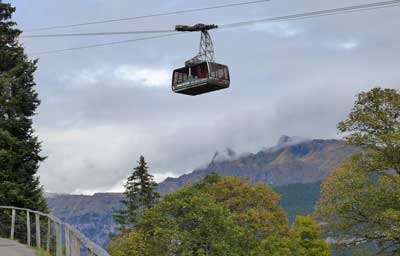
- Schilthorn
- Route: Stechelberg (Lauterbrunnen) to Schilthorn
- Train type: cable car
- Journey time: 1 hour
- 2nd Class fare: CHF108
- Supplement for Swiss Pass holders: 54
- Engelberg to Mt. Titlis cable car
- Route: Engelberg to Mt. Titlis
- Train type: cable car
- 2nd Class fare: CHF96
- Supplement for Swiss Pass holders: 46
The Swiss Travel Pass also includes free museum admission, but…
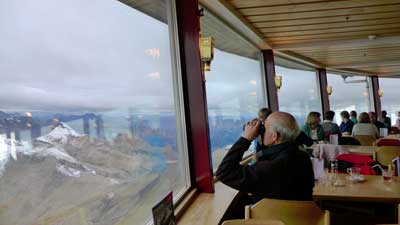
The problem is that the museums are only free on valid travel days, and almost no one would visit more than one or two museums with a Swiss Travel Pass. The trains and cable cars are so expensive that the pass gives very good value to cover those, so you don’t want to waste precious sightseeing time walking through a museum that only costs CHF10 anyway.
In other words, calculate the value of a Swiss Travel Pass on the travel savings only, and if you visit a museum here or there, then great. Most people are better off trying to squeeze in an additional train ride each day, and ignoring the museums. Switzerland is all about the outdoor scenery. As nice as the museums may be, they are not why you are there.
The pass includes free public transport in most Swiss cities
Similar to the free museum part of the offer, it’s best to ignore or minimize the value of free public transportation. It could be helpful in Zurich, but in most other Swiss tourist towns you won’t need much public transport. In fact, in Interlaken, each hotel or hostel guest automatically gets a card for free public transportation within the town (including between the two train stations).
So you might use a ride or two each day on public transport, but that won’t add up to much in terms of value of your Swiss Travel Pass.

Hi Wade,
Can you pls guide if I should take a Swiss pass or half fare card for my trip which I have planned as follows:
27-Sep Fly from Paris to Zurich Check-in and Half day City tour”
28-Sep Full day tour to Lucerne + Mt. Titles and back to room in Zurich (this can be adjusted on 28 or 29 depending upon weather)
29-Sep Black forest and Rhine falls and back to room in Zurich
30-Sep Change base from zurich to Wengen. Explore Interlaken and other nearby region. Or leave bags at interlaken station and visit reichenbach falls if possible.
1-Oct Full day Jungfrauojch tour and back to hotel
2-Oct Tour to Bern
3-Oct Change base to Geneva – leave early morning and travel from Wengen to Geneva by train with golden pass route from interklaken to Montreux. Leave bags at station and explore Montreux.
4-Oct Geneva City tour with boat cruise or tour to Annecy.
5- Oct Leave for nice
Thank you very much for your help.
Tapas,
My best guess is that the Half Fare Card would be the better option for you, but you’d really have to add up those train fares to be sure. It doesn’t look like you are doing enough long train rides in a short enough time for the full Pass to pay for itself, or at least be a cheaper option than the Half Fare Card. And as I’ve mentioned before, the Half Fare Card gives a 50% discount on Jungfraujoch and the Pass only offers 25% off, so that is another thing in favor of the Half Fare Card. Have a great trip. -Roger
Thanks Roger for the help. One more question regarding half fare card.I have read online that 50% discount is not valid if you go early in the morning to jungfraujoch. Is it true?
Aman,
I’d not heard this before, but evidently they offer a special Good Morning Ticket at a lower price than the normal trains. And there doesn’t seem to be a way to use the Half Fare Card on that one, at least on the website that promotes it. So I’m not 100% sure, but it may be true that the earliest train isn’t eligible for Half Fare because it’s already a discount. -Roger
Hi Roger,
My girlfriend and I will be in Switzerland in two weeks and wanted to get your thoughts on whether a half pass or the full pass would be the best based on our itinerary:
Oct 3rd: Arrive in Zurich and go to Wengen
Oct 3rd – Oct 5th: Arrive and stay in Wengen
Oct 5th – Oct 8th: Arrive and stay in Bern
Oct 8th – Oct 9th: Arrive in Basel
Oct 9th: Leave Basel
Also, any must sees in the area would be great to know. Thanks in advance – your posts have been very helpful!
Collin,
Unless you are planning more train rides and activities, I’m not even sure the Half Fare Card (CHF120) will pay for itself, although it probably will. If you’ll be taking the cable car in Wengen and doing some other train rides while you are staying there, then the Half Fare Card is the definite choice. You’d need to be doing much more train travel for the Swiss Travel Pass to be good value for this trip. Let me know if you have any other questions. -Roger
Hi Roger,
Me and my wife are in Switzerland from 23rd to 30th Sept with our Swiss travel pass valid till 2nd Oct.
We are traveling to Venice on 30th morning and I have made a reservation from Domo to Venice. This is on train IC37 that leaves Domo around 10.17am and without any changeover at Milano reaches Venice at 2.40 pm.
Though I have read this earlier that with Swiss Travel pass valid till Domo I only need reservation from Domo to Venice which I have, but when I bought my swiss pass from a local office of swisstours the lady confused me and said I might need reservation from Interlaken/Brig.
Do I need to make a reservation on the earlier leg (Interlaken to Domo on 30th morning) too?
Hi Roger,
Thanks a ton for the detailed information on swiss passes.
I will be arriving in Switzerland from Amsterdam staying in interlaken for 3 days. Here is what I want to do.
1)after checking in explore luzern
2) trip to Jungfraujoch
On second day
And golden pass line on 3rd day. Is half fare way card is better for itinerary?. And can I buy half fare card at interlaken?.
Aman,
Yes, for what you have in mind, the Half Fare Card is the best choice. It will save you more than the Swiss Travel Pass or buying normal tickets. You can buy the Half Fare Card online and print it at home, or you can buy it at any train station in Switzerland. Have a great trip. -Roger
Hi Roger, thanks for your reply. I bought the half fare pass, and have further questions regarding buying train tickets ii n between places.
So, the final itinerary would be
Day 1- arrived at Bern (3.40) explore the city then go to Interlaken. Stay in Interlaken.
Day 2 – Exploring Lauterbrunnen/Gimmelwald/Murren (AND SCHILTHORN – if the weather permits). stay in gimmelwald
day 3 – early morning take train to Lucern, explore Lucern. Stay in Lucern
Day 4- early morning ride first train from Lucern to Zurich, then fly back home.
1. Is it better to buy the ticket in advance or on the spot? Because for instance we want to stroll around in Bern, we haven’t decided what time to go to Interlaken. Are the prices greatly varied between buying earlier or buying on the spot?
2. Is there a locker that I can use in schiltorn/murren? Because day-2 trip to schiltorn, I plan to check out from Interlaken hotel, and buy one way ticket to schiltorn. Later on from schiltorn but one way ticket to murren. From murren to gimmelwald walking down.
With this planning, I think I need locker to store my luggage. Any information?
Or shall I check in first in gimmelwald?
(Do I think of the right route?).
3. What activities would you suggest us to do in Lucern? Do we get half price disc for the lake tour?
Hopw to hear from you soon. Thank you, Roger 🙂
Sendy,
The fares for domestic train tickets in Switzerland are the same no matter when you buy them. So if you are unsure then you can just wait until just before you want to go and buy then.
There are luggage lockers at both Interlaken train stations, but I’m not sure about the Lauterbrunnen station. I would guess that there are, but I’m not sure. You could check into your hotel in Gimmelwald and then continue on the cable car up to Schilthorn 30 minutes later. They go every 30 minutes, and that is plenty of time to check in and walk back to the cable car station.
You do get half price for the lake tour, and you can spend a whole day doing that because it stops at villages around the lake and you can hop off and explore before getting back on a later boat. The town itself is also really lovely, and of course there is the famous lion sculpture that is worth the 10 minute walk from the lake. There is plenty to do there. -Roger
Hi Roger, I’m hoping you can help us to decide between the Swiss Travel Pass or the Half Fare card. We’ll be visiting Switzerland and be staying in Interlaken end of November this year. We’ll be there for 4 days and 3 nights. We want to visit the 2 peaks of Jungfraujoch and Mt Titlis and experience the cable car and scenic train up to the top. And taking the train to Spiez on our last day. Which pass would you recommend. Our basic itinerary will be something like this..
Day 1 – Zurich Airport to Interlaken (we’re staying there)
Day 2 – Visit the peak of Jungfraujoch (top of europe)
Day 3 – Visit the peak of Mt Titlis
Day 4 – Leave Interlaken to Spiez for a connecting train to Milan
We hope and trust you can give us the best suggestion on which pass to get for our trip. Thank you so much!
Firdhaus,
I’d recommend the Half Fare Card for you. You aren’t taking enough long train trips to make up the cost of a travel pass, and as mentioned before, the Swiss Travel Pass only gets you a 25% discount on Jungfraujoch, while the Half Fare Card gives you 50% off. That alone almost pays for the Half Fare Card itself. Have a great trip. -Roger
Dear Roger,
we are a group of six adults travelling on September 20th,this is our list as planned
1. arrive Geneva 20/9 and tour Geneva
2. rent car head to Annecy
3. Take the Golden pass to Lucern and disembark at Interlaken
4. Stay in Interlaken one day , see St. beatus Caves, Grimmelwald, Harder Kulm, ND MAYBE schilthorn if time allows
5. Head next day to Lucern and take the Mount Pilatus tour, then take train to zurich
6. Stay in Zurich one day and enjoy Zurich
7. Head to The blackforest tour and at night take train to Lugano
8. Stay in Lugano one day
9. head back to geneva by plane and then fly back
my question is , would it be better to take individual trips or take the swiss pass?
the other question do you think this is a doable list ?
Thank you
Sima,
It doesn’t look like you are doing enough long rail journeys to pay for a Swiss Travel Pass for the length of your trip, so you should look into the Half Fare Card. It will save you quite a bit more money and it allows you to be flexible with where you go.
It’s a busy list, but I think it’s doable. I’m not sure which Black Forest tour you are taking, and in my experience the Black Forest is a bit of a dud compared to the Alps and other natural sights in the area.
Also, I generally recommend that people skip Zurich unless there are specific things they want to see there. It’s nice enough, but kind of boring and it’s extremely expensive. Let me know if you have any other questions. -Roger
Can you please if the Itinerary here makes sense we reckon we would need the 15 day travel pass. Arrive in Zurich and stay overnight, half of next day in Zurich the train to St Moritz for 2 nights, train to Locarno stay for 2 nights, train to Zermatt for 3 nights, train to interlaken for 3 nights, train to Lucerne for 3 nights the back to Zurich for 1 night and flight the next day.
Would you recommend staying anywhere else or does that look ok.
The info you have gathered ir much appreciated.
Den
Denis,
Your itinerary looks good. I’d say 3 nights in Zermatt might be more than you need to see the Matterhorn from a couple different angles, but I’m sure you’d enjoy it either way. The 15-day Swiss Travel Pass looks like it would be a good deal for you, but if you aren’t planning on doing more trips than that I think a Half Fare Card might save you more. On the other hand, if you are going to do some day trips, and especially on the special scenic trains, a Swiss Travel Pass will be a better deal. You can also go up Mt. Rigi from Lucerne and ride the lake cruise boat for free with the Pass. So again, if these are your only train trips then the Half Fare Card should be cheaper, but I’d highly recommend doing some train rides while your there and if you do that the Pass will be better. -Roger
Hello Roger,
First, thank you so much for your blog and all of your comments. They have helped me a lot in the planning of my trip.
I will be visiting Switzerland with my girlfriend from Sept. 19th to Sept. 23rd.
Our itinerary is:
9/19 – Arrive at Zurich Airport at 3pm and catch train to Lucern – Explore Lucerne – Spend the night in Lucerne
9/20 – Day trip to Mt. Rigi or Mt. Pilatus or something else – Stay night in Lucerne
9/21 – Travel from Lucerne to Wengen – Stay night in Wengen
9/22 – Where to go and what to see??? Stay night in Wengen
9/23- Train from Wengen to Zurich – Fly out from Zurich at 7pm
My questions are:
1) What is your suggestion for our second day – go to Mt. Rigi or Mt. Pilatus or both or one of these plus something else?
2) On day 3 we travel from Lucerne to Wengen – Should we stop along the way to see things, if so what ?
3) What is the best/cheapest way to see Murren, Lauterbrunnen, Interlaken, Gimmelwald, Schilthorn, Jungfraujoch, Trummelbach waterfalls
My question is what is the best way to see these destinations in the most economical way and in the most efficient order.
From your previous comments, I think that the Half Fare Card would be the best bang for our buck. If you buy two half fare cards is cheaper than buying two separately?
Regards,
Ethan
Ethan,
On that second day I would do Mt Rigi because it’s easier to reach from Lucerne. One of the most popular things to do in Lucerne is to take the lake cruise that leaves from right in front of the train station. It stops at 4 or 5 small towns on the lake, one of which is where you get the cable car up to Mt Rigi. So you could do Rigi on that boat trip and then complete the boat trip when you get back down.
The train ride from Lucerne to Interlaken to Wengen is very scenic, but I wouldn’t stop since there are so many sights in the Wengen area.
The cheapest way to do Jungfraujoch and/or Schilthorn is with the Half Fare Card. It will be good value for you to get a Half Fare Card based on what you are planning already. Jungfrau and Schilthorn are the peaks on opposite sides of the Lauterbrunnen Valley, and being up there is very different from being only halfway up the mountain. If you would prefer not to do either of those and you want something good that is far cheaper I’d take the cable car up to Murren and then walk down to Gimmelwald before taking the cable car back down. With the Half Fare Card it will only cost around US$5 to get up to Murren and about US$3 to get back down. The views from Murren and Gimmelwald are spectacular, although quite different from the peaks. At least it’s MUCH cheaper that way. You can also see the waterfall in Lauterbrunnen on the bus ride from the train station to Stechelberg, which is covered by the same ticket. I think if you want to get out from the bus to see it you can do that and take the next bus 30 minutes later, but I’m not sure.
The Half Fare Cards cost the same no matter how many you buy, at least as far as I’ve seen. Have a great trip. -Roger